#Mayon Volcano
Situation Report No. 2
26 January 2018
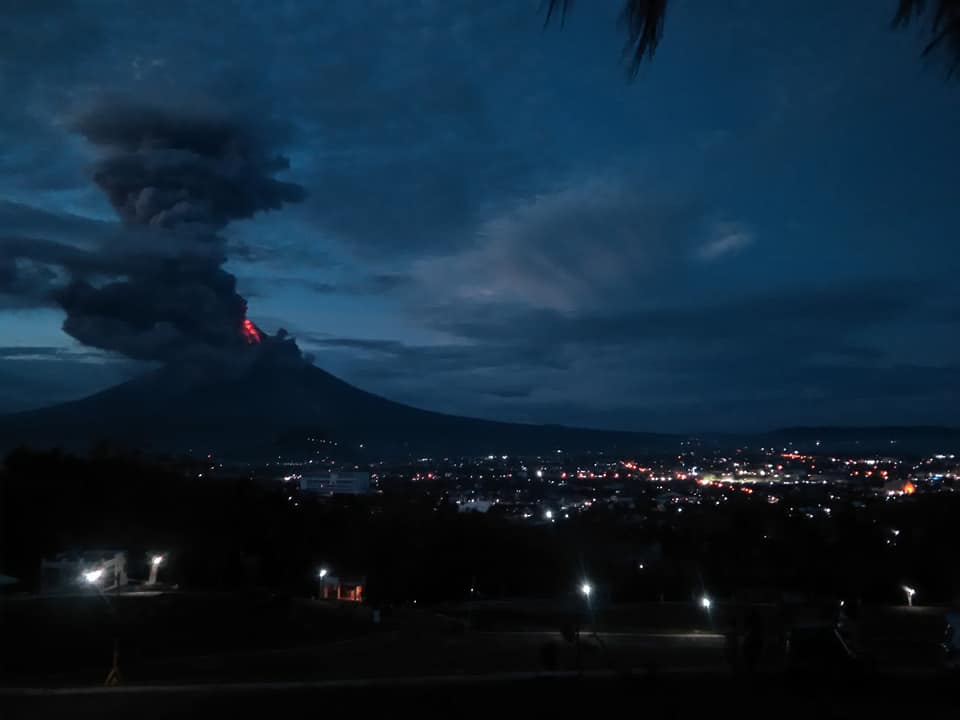
Situation Overview
Jan. 13, 2018 – PHIVOLCS raised Alert Level 1 (abnormal) when Mayon Volcano generated a steam-driven explosion (eruptions caused by groundwater flashing to steam as it is heated by magma), producing high grayish ash plume.
Jan. 14, 2018 – Alert level is raised to No. 2 (increasing unrest) and later to No. 3 (increased tendency towards hazardous eruption) when the volcano exhibited high unrest and magma was at the crater. DOST-PHIVOLCS warned that a hazardous eruption was possible within weeks or days.
Preparation for evacuation was advised to barangays within the 6-kilometer Permanent Danger Zone (PDZ).
Jan. 15-21, 2018 – Continuous lava collapse events, episodes of tremor, rockfall events, pyroclastic density currents (flows of searing hot gas, ash and rocks) and ash clouds were recorded. Alert Level 3 remained in effect.
Jan. 16, 2018 – Through Resolution No. 00670-2018, the province of Albay, Region V was declared under a State of Calamity.
Jan. 22, 2018 – PHIVOLCS raised Alert Level No. 4 (hazardous eruption imminent) as lava fountains as high as 200m-500m and more voluminous lava flow were observed. The Danger Zone is extended to 8-kilometer radius. Volcanic ash posed threat to aircrafts flying close to the volcano’s summit.
Jan. 23, 2018 – Mayon’s seismic monitoring network recorded two explosion-type earthquakes corresponding to five-kilometer vertical column eruptions, 15 tremor events some of which corresponded to lava fountains as high as 500m to 700m, 35 rockfall events and two pyroclastic density currents.
Lava flows from the summit crater advanced to three kilometres from the Miisi Gully and 200 meters from the Bonga-Buyuan Gully. An average of 992 tonnes/day sulphur dioxide emission was measured.
The danger zone around Mayon was expanded to 9km as part of precautionary measures.
Jan. 24-25, 2018 – Mayon continued hurling red-hot lava, and ash plumes as high as 2,500m (up to 3,000m recorded on Jan. 24) into the sky accompanied by hot ash, lava and rocks rolling down its flanks and with rumbling sound. Lava fountainings were recorded as high as 500m on Jan. 24 and 300m on Jan. 25, 2018. Alert Level 4 remains in effect.
Effects on the population
According to the Disaster Response Operations Monitoring and Information Center (DROMIC) of the DSWD-DReAMB, as of Jan. 26, 6am, the number of displaced reached more than 20,000 families. A total of 18,365 families or 69,672 individuals are taking temporary shelter in 69 evacuation centers while 2,822 families or 11,946 individuals are staying with relatives in Camalig, Daraga, Malilipot and Sto. Domingo.
Albay Provincial Agricultural Services reported Php 160 million-worth damages in the agricultural sector as lava and ash particles continue to funnel out of Mayon. Bicol Regional Agriculture and Fisheries Information Officer Emily Bordado said at least 5,750 farmers and 5.9 hectares of vegetable fields are affected. An average of Php20/kg increase in vegetable prices is noted in Legazpi Public Market despite the prize freeze imposed by the Department of Trade and Industry Bicol.
On Jan. 23, authorities shut down schools and businesses in Albay province. As of Jan. 25, NDDRMC reported suspension of classes in 17 cities/municipalities in the provinces of Albay and Camarines Sur.
Civil aviation authorities have closed airports in the cities of Legazpi and Naga and at the nearby island of Masbate, while small aircraft have been banned from flying near the volcano. NDRRMC reported cancellation of 11 international flights and 50 domestic flights.
Some highways have also been closed, with ash showers making driving in some areas nearly impossible.
Key findings of the rapid assessment conducted by Tarabang para sa Bicol, Inc. (TABI) during the first week of evacuation:
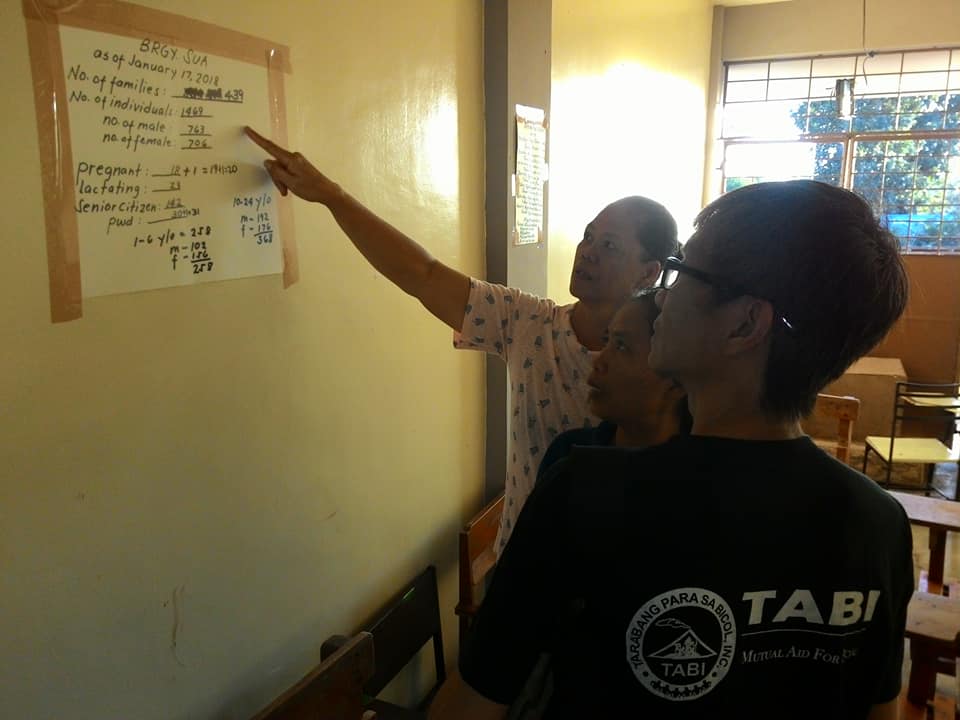
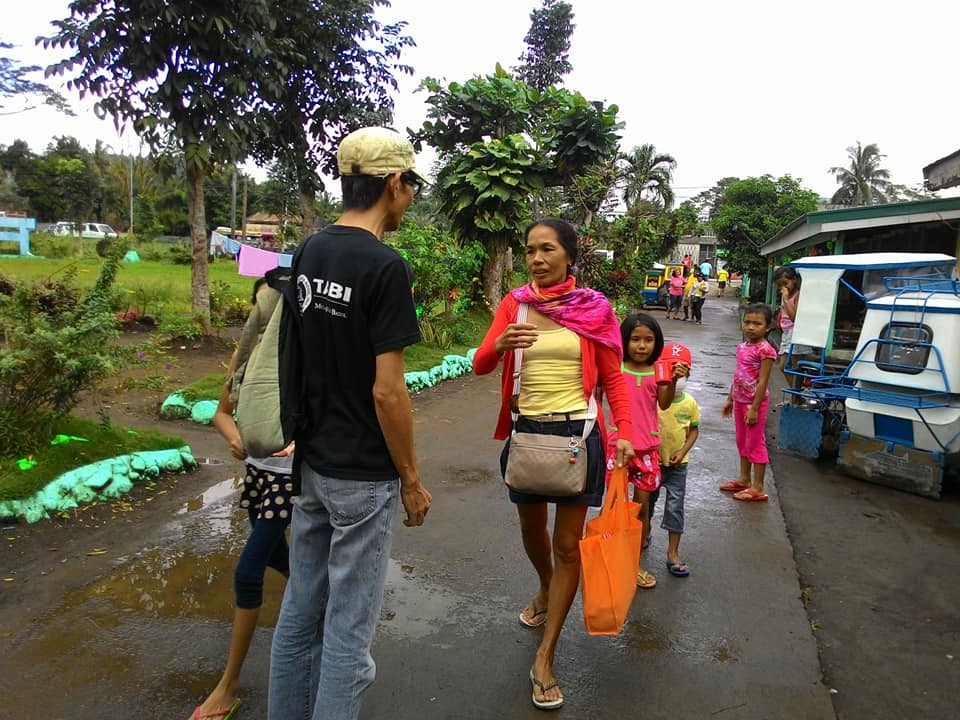
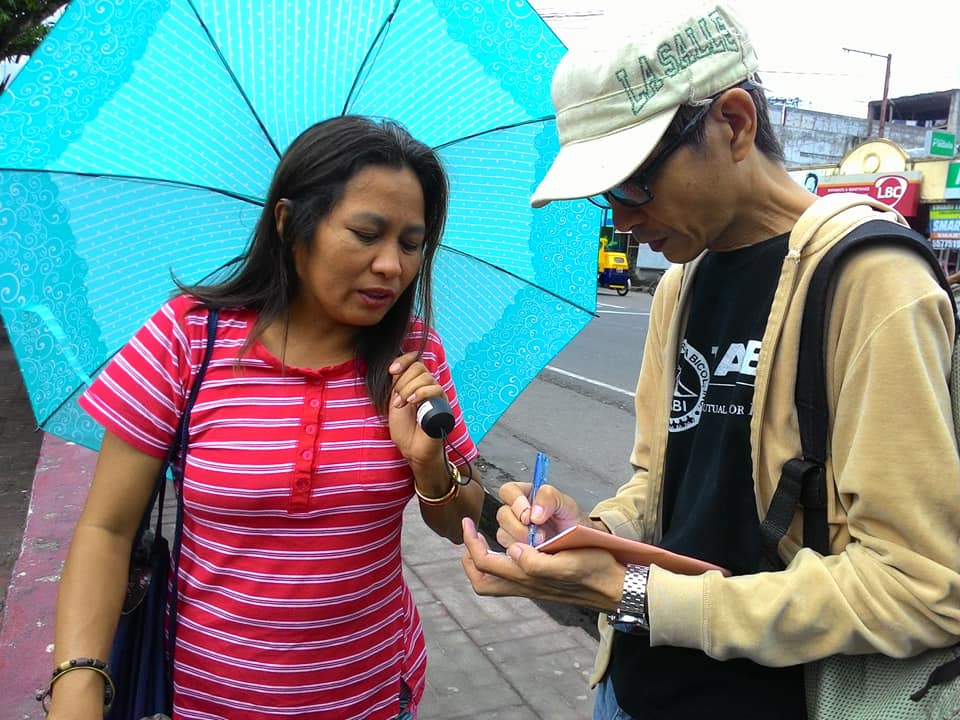 Evacuees complain of inadequate food supply. As of January 20, in 4 evacuation sites, an average of only 10 kilos of rice was rationed during the first 7 days of the evacuation period.
Evacuees complain of inadequate food supply. As of January 20, in 4 evacuation sites, an average of only 10 kilos of rice was rationed during the first 7 days of the evacuation period.
Inadequate hygiene supplies was also noted.
No income source for families to address non-food needs like transportation, educational needs of students, and household supplies.
Some evacuation centers lack sanitary kitchen facility, bathrooms and toilets.
Overcrowding is common. 20-30 families would usually share 1 regular-sized classroom.
Most evacuation centers have enough drinking water supply. However, domestic water supply is limited. Evacuees with small water containers/pails are not able to store enough water.
Some evacuation centers are not safe from ashfall.
TABI response
Distribution of plastic sheets. The plastic sheets will be used as temporary roof cover and partitions for privacy at Taladong Elementary School and Comon Elementary School in Camalig, Albay. Plastic sheets are from the Asia-Pacific Alliance for Disaster Management (A-PAD).
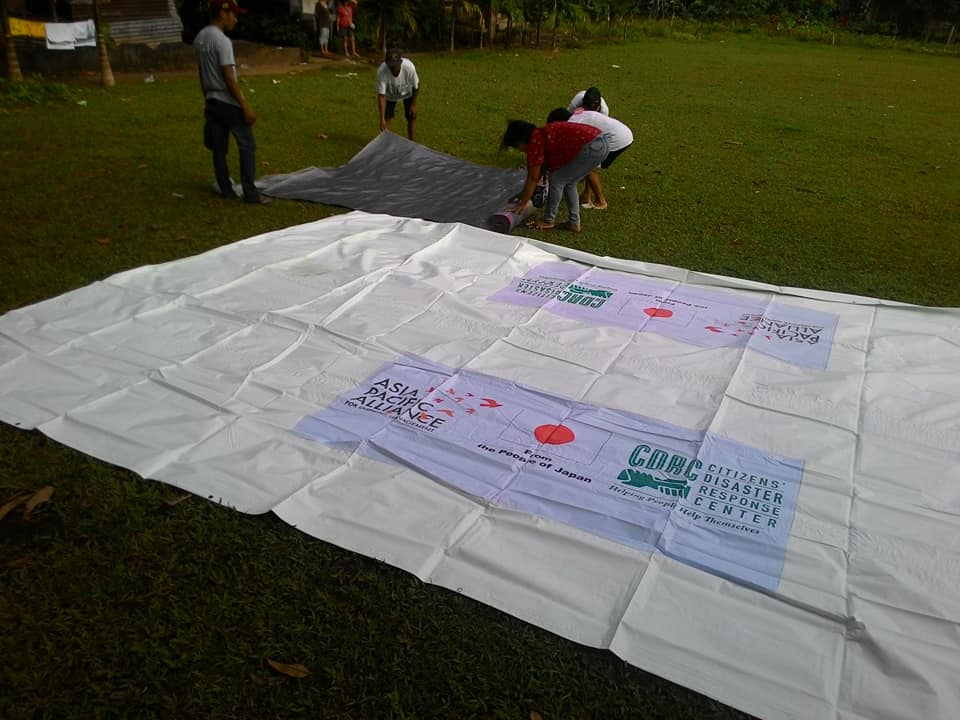
Hot Meals Delivery. One set of kitchen utensils is stationed at Taladong Elementary School. The DPC of Barangay Sua and Barangay Sua will manage the Hot Meals Kitchen. Another set of kitchen utensils is for the mobile kitchen intended for evacuation centers without TABI-DPC.
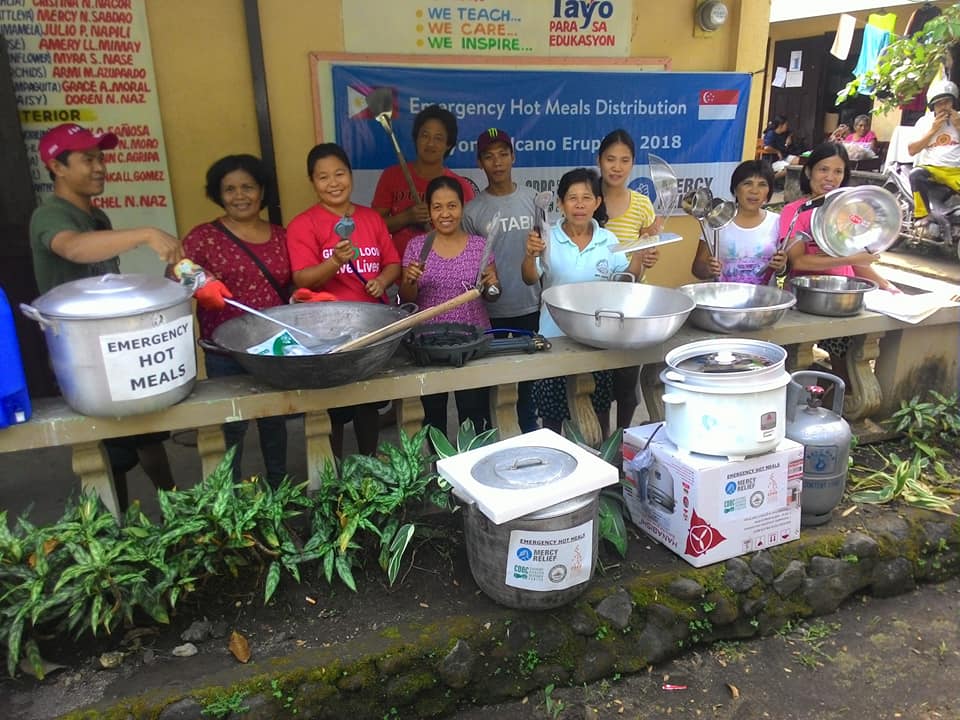
More than a thousand Mayon evacuees served with macaroni soup and arroz caldo at Taladong Elementary School and Daraga Resettlement Site.
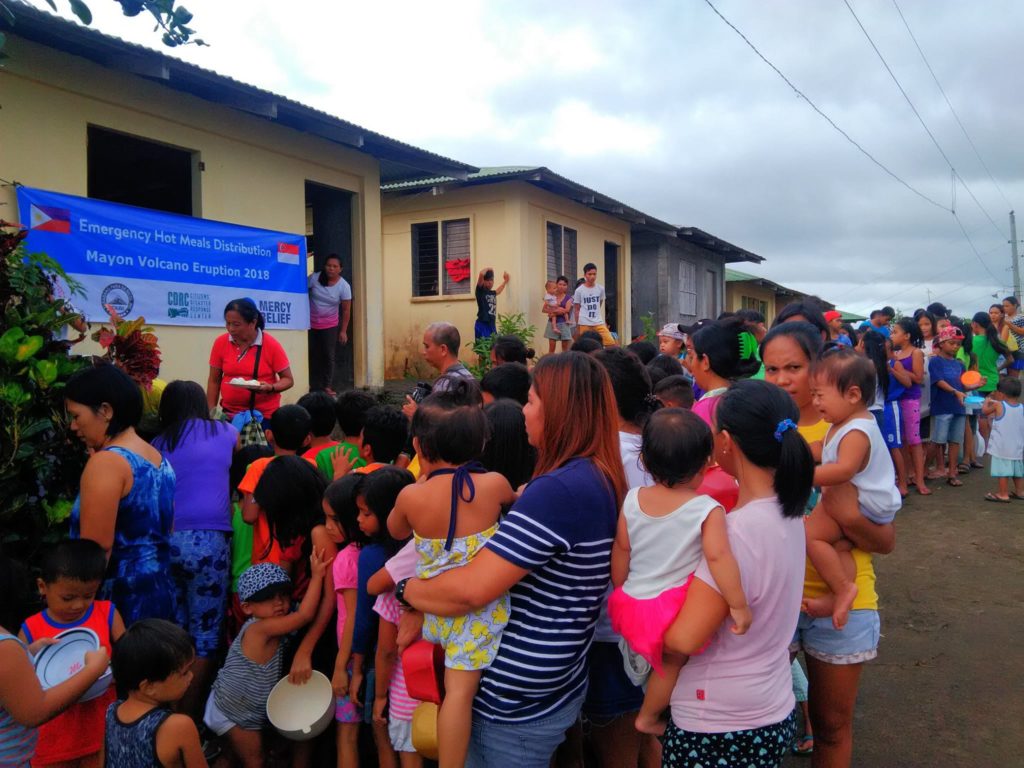
Citizens’ Disaster Response Center.
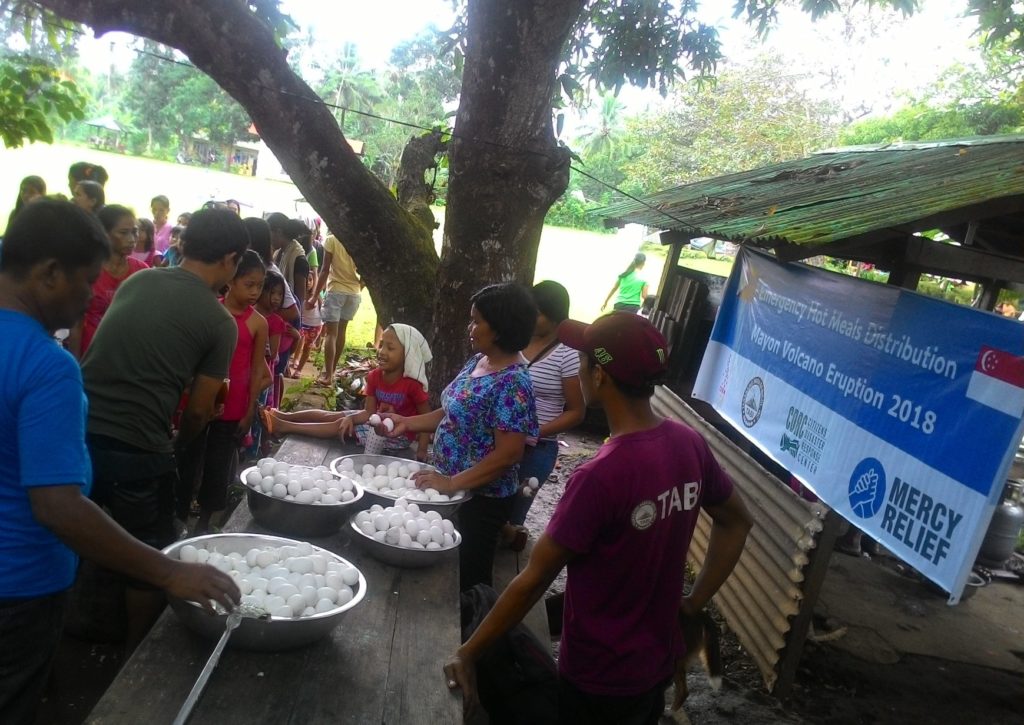 Partnership with private sector. #A-PAD Metro Naga, composed of local business sector, academe, media and religious sectors has started its fund raising for Mayon.
Partnership with private sector. #A-PAD Metro Naga, composed of local business sector, academe, media and religious sectors has started its fund raising for Mayon.

Collaboration with the business sector (A-PAD Metro Naga), government (barangay officials of Sua and Tumpa in Camalig), international partner (Mercy Relief), and community (DPC) for a more organized and efficient hot meals delivery in Comun Elementary School in Camalig, Albay.
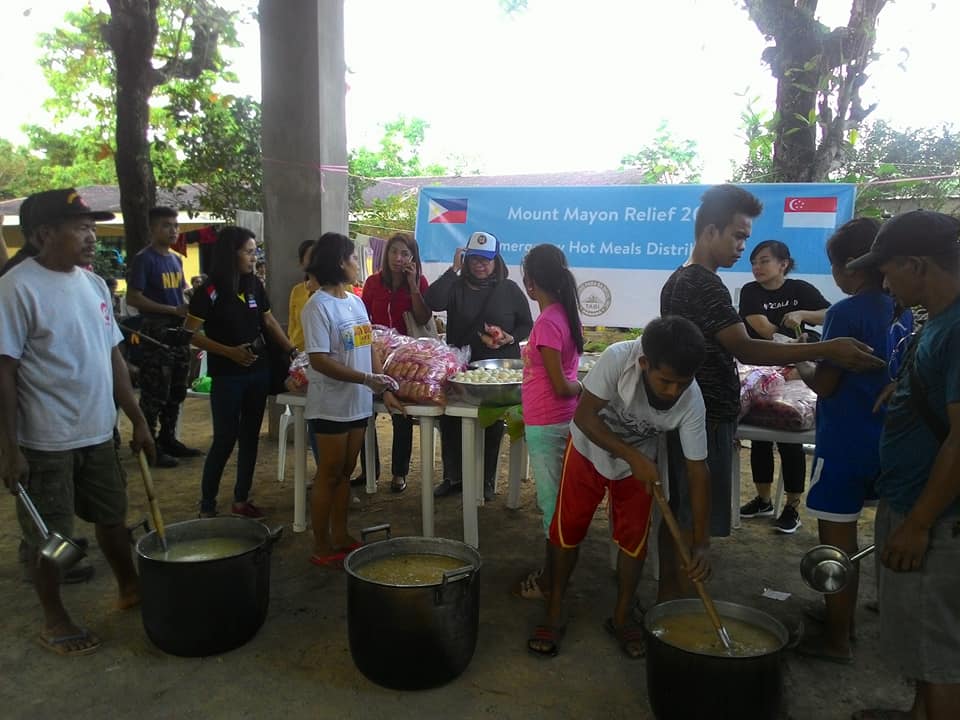
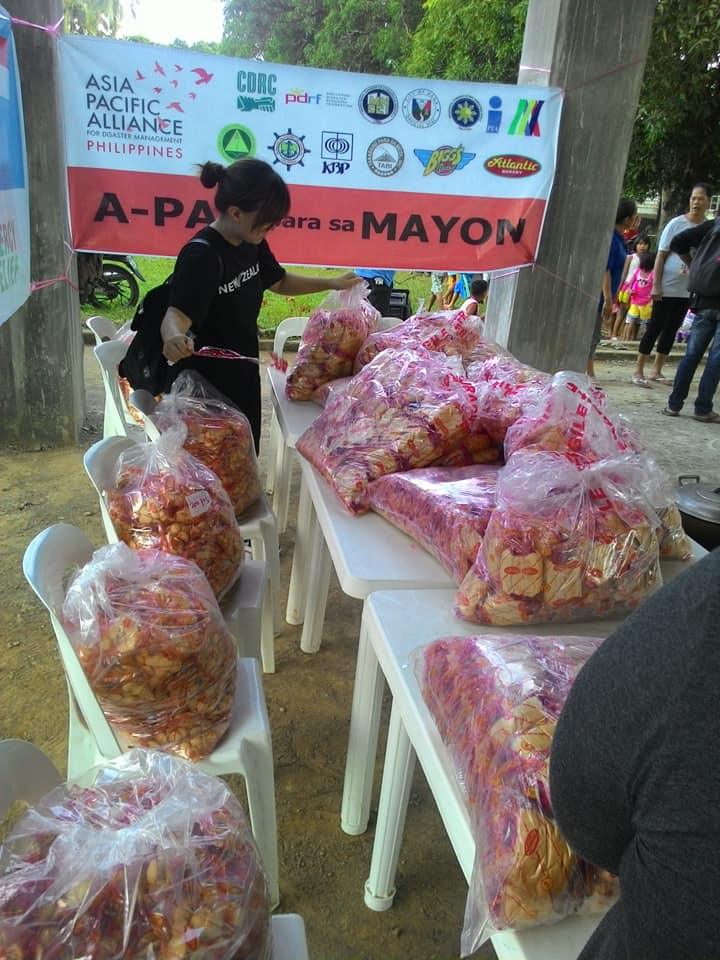
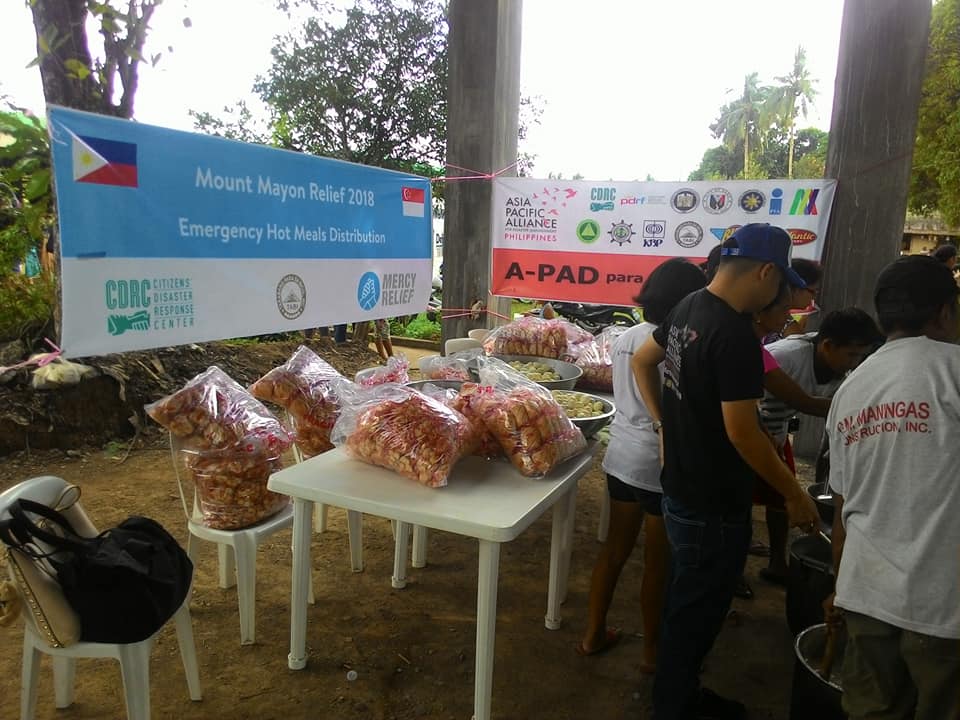 Continuous damage, needs, capacities assessment (DNCA) with assistance from #CARE and call for donations.
Continuous damage, needs, capacities assessment (DNCA) with assistance from #CARE and call for donations.
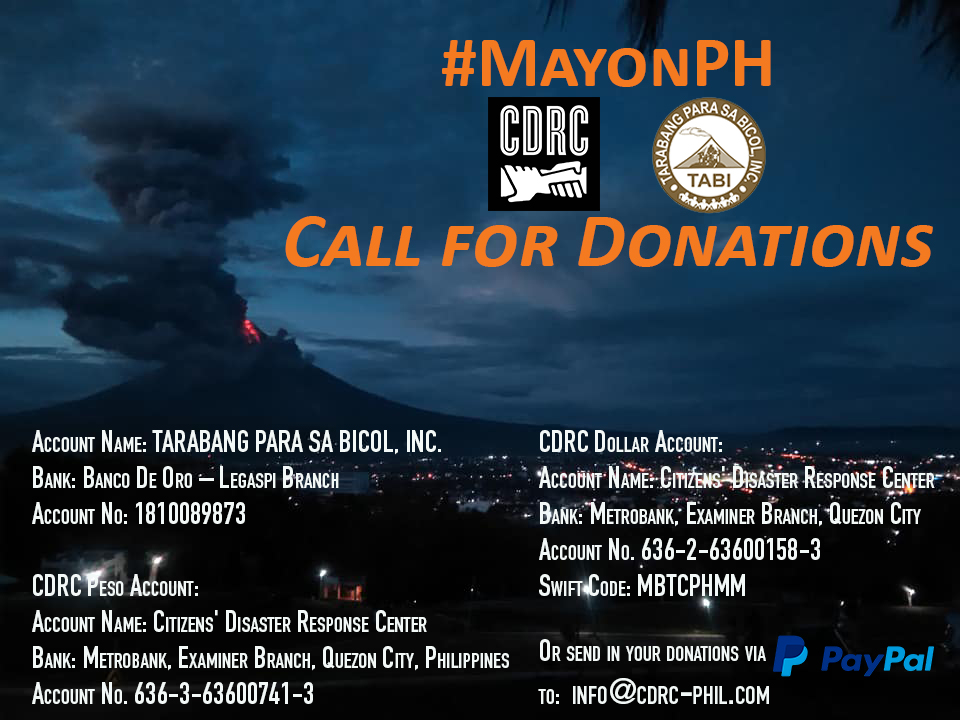
References:
1.NDRRMC Situational Report
2.DROMIC Situational Report
3.TABI rapid assessment results
4.CDRC call for donations
See PDF file Mayon Volcano Sit Rep 2

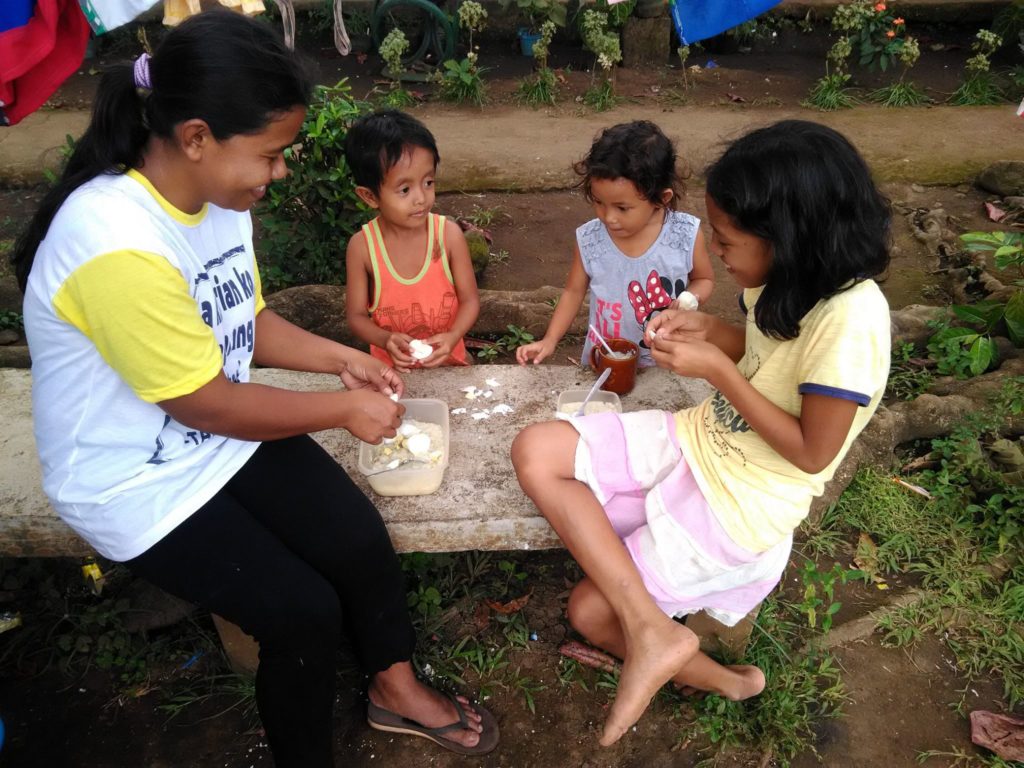
Leave a Reply